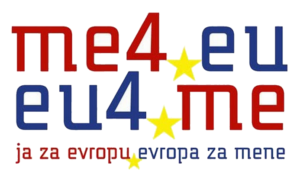Sub-areas?
The Taxes chapter is divided into four subchapters: indirect taxation, direct taxation, administrative cooperation and mutual assistance, operational capacity and computerization.
Direct taxes are taxes that burden the taxpayer’s economic capacity by directly affecting his wealth or income. Direct taxes include income taxes, property taxes and taxes on the use of goods.
Most of the provisions relating to these types of taxes are determined by the Member States themselves, respecting the four freedoms of the Treaty establishing the European Community (freedom of movement of goods, services, persons and capital). The EU acquis in the field of direct taxation relates mainly to income taxes (paid by companies). The EU aims to prevent harmful tax competition between member states and to support the principle of free movement of capital. The absence of these rules in the past has led to the provision of excessive tax incentives in some Member States, with the aim of attracting foreign investment, often at the expense of other EU countries where investment has been more economically viable. For the purpose of eliminating harmful tax measures, Member States undertake Code of Conduct for Business Taxation. Common EU rules ensure the harmonization of tax rates for cross-border payments of interest, copyright as well as for cross-border sales of goods and services within companies (so-called transfer pricing).
Indirect taxes are taxes levied in connection with acts of production, consumption or exchange of goods.
Indirect taxes refer to value added tax (VAT) and excise duties on tobacco products, alcohol, energy and electricity, which directly affect the free movement of goods and the freedom to provide services. Therefore, harmonization at EU level is needed, as changes and differences in VAT or excise duties on these products can easily distort market competition. Value Added Tax (VAT) was introduced in 1970 as a general consumption tax, applicable to all stages of production and distribution of goods and services. The minimum VAT rate in the EU is 15% and applies to most goods and services. Differences exist between Member States and range from 15% in Luxembourg, Cyprus (17%) and Malta (18%), over a rate of 19% in Germany, to the highest rates of 25% in Denmark and 27% in Hungary.
Rates below the average are allowed for products and services that are not competitive with products and services from other member states, such as e.g. medicines, etc. The EU acquis and taxes related to excise duties include harmonization regulations for three product categories: tobacco products, alcoholic beverages and energy products. These regulations, among other things, determine the minimum tax rates for each type of product. Minimum tax rates for fuel, natural gas, electricity and coal are in the interest of fair competition and represent a means of encouraging energy savings as well as the use of environmentally friendly fuels. However, regulations at EU level are flexible enough to allow for specific national circumstances.
Member states may also impose special taxes on other categories of products which application must not create obstacles to the free movement of goods outside the territory of that State.
Union legislation in the field of administrative cooperation and mutual assistance between the tax and customs authorities of the Member States offers solutions for the exchange of information, in order, on the one hand, to prevent illegal and lawful tax evasion and, on the other, to collect data on taxable subjects, automatically, and on demand.
Operational capacity and computerization are very important for connecting and exchanging information at the level of the Union tax authorities. In this regard, national capacities need to be improved in order to obtain a compact and functional mechanism that will profile itself as a reliable and credible partner to other European tax systems within the EU.
When was the chapter opened?
Chapter 16 – Taxes was officially opened on 30 March 2015 at the Intergovernmental Conference in Brussels.
Closing benchmarks?
In Chapter 16, the European Commission defined three closing benchmarks:
1. Montenegro shall adopt laws in areas requiring further harmonization. First of all, significant progress should be made towards harmonization in the areas of VAT, excise duties and direct taxes. It provides the Commission with a detailed plan for achieving full alignment with the acquis by the accession date.
2. Montenegro has adequate administrative capacity and the necessary infrastructure in its central and local tax offices for the implementation and enforcement of tax legislation and efficient tax collection and control of taxpayers. In addition, Montenegro ensures that the Central Liaison Office and the Central Cooperation Office in the Field of Excise Duties will have sufficient staff and be adequately operational upon accession.
3. Montenegro is showing sufficient progress in the development of all IT systems of tax administration, including those related to interconnection, especially those for VAT (VIES), excise duties (EMCS) and IT systems needed for tax cooperation and exchange of information in the field of direct taxation.
The closing benchmarks in Chapter 16 – Taxes are primarily aimed at harmonizing national with European legislation, as well as improving both administrative and infrastructural, as well as information capacity. IT connectivity is of key importance for this chapter in order to have unhindered and timely circulation of information and unhindered mutual cooperation of the tax authorities.
What are the activities in the coming period?
In the coming period, Montenegro will be committed to fulfilling its obligations from Chapter 16, which includes the adoption of laws in the field of indirect and direct taxation such as – Law on Amendments to the Law on Value Added Tax, Law on Amendments to the Law on Excise Duties, Law on Amendments to the Law on Corporate Income Tax. Also, it is necessary to continue with the implementation of the Action Plan that deals with the issues highlighted in the Analysis of the Tax Administration using diagnostic assessment instruments (TADAT), as well as finalizing activities on the signing of the Multilateral Convention on Mutual Administrative Assistance in Tax Matters.
Institutions / organizations participating in the negotiating group?
The Government of Montenegro and the Ministry of Finance are responsible for conducting tax policy, while the Tax Administration is in charge of its implementation. Also, members of the Working Group of the Negotiating Chapter 16 are representatives of the Central Bank, the Customs Administration, as well as representatives of the civil sector.
What are the benefits for Montenegro from this chapter?
Montenegro will be obliged to harmonize its legislation in the field of tax information exchange with the competent EU institutions, which will contribute to more efficient control of collection and reduction of tax evasion and lead to a significant increase in budget revenues and reduction of unemployment. Montenegrin citizens will be able to work in other EU member states, and will enjoy the same tax benefits as the local worker.
One of the advantages is the fact that after Montenegro’s accession to the EU, a Montenegrin citizen will no longer be obliged to pay VAT on a used car imported from the EU member states.
When it comes to Montenegrin companies, the advantages of doing business within the EU in terms of taxation relate to lower administrative costs for entrepreneurs (removal of customs barriers); less bureaucracy (eGovernment, reduction of administrative and statistical formalities performed by business entities, especially small and medium enterprises); transparent and secure business for entrepreneurs in all member states (free validation of VAT identification numbers).


